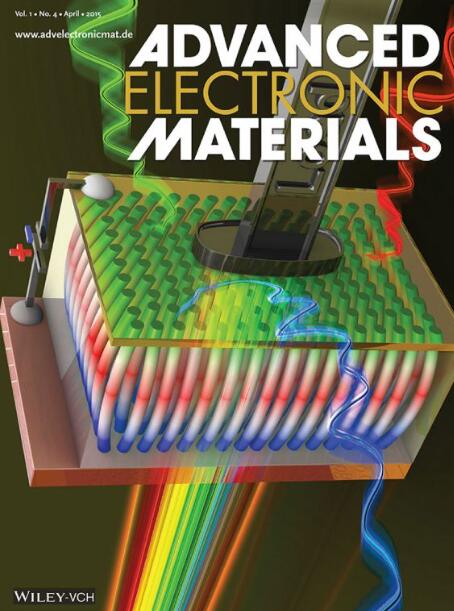液体添加剂改善液态金属泡沫的直墨书写性能
IF 5.3
2区 材料科学
Q2 MATERIALS SCIENCE, MULTIDISCIPLINARY
引用次数: 0
摘要
基于ga的液态金属(LMs)在室内条件下是导电液体,这使得它们对印刷导电图案具有吸引力。然而,由于其高有效界面张力和低粘度,LM以液滴形式挤出。相比之下,液态金属泡沫(lfs)表现出屈服应力和剪切变薄行为,这是挤压直墨书写(DIW)长丝所必需的。LMFs是通过在空气中搅拌LM,从而夹带氧化层气囊制成的。与含有金属颗粒的LM混合物不同,lfs不会因金属间相形成而脆化。本文探讨了LMF的DIW和挤压过程中不同相分离的挑战。在LMF中加入添加剂甘油和单宁酸(TA)可以提高混合物的印刷性。新配方LMFG (LMF +甘油)和LMFGT (LMF + ta -甘油溶液)比LMF挤出更均匀,打印质量更好。有趣的是,LMF的粘度和流动应力介于LMFGT和LMFG之间。这突出了仅依靠流变性能来预测lmf基混合物可印刷性的局限性。以LM为连续相,这些基于LM的油墨具有高导电性。除其他优点外,基于llf的油墨的DIW可以在室内条件下完成,而无需额外的预处理/后处理。本文章由计算机程序翻译,如有差异,请以英文原文为准。

Improved Direct Ink Writing of Liquid Metal Foams via Liquid Additives
Ga-based liquid metals (LMs) are conductive liquids in room conditions, making them attractive for printing conductive patterns. Yet, LM extrudes as droplets because of its high effective interfacial tension and low viscosity. In contrast, liquid metal foams (LMFs) exhibit yield stress and shear-thinning behavior, which are necessary for extruding filaments for direct ink writing (DIW). LMFs are made by stirring LM in air, thereby entraining oxide-lined air capsules. Unlike LM mixtures containing metallic particles, LMFs do not embrittle from intermetallic phase formation. Here, DIW of LMF and the challenge of separation of dissimilar phases during extrusion are explored. Incorporating additives, glycerol and tannic acid (TA), into LMF improves the printability of the mixture. The new formulations, LMFG (LMF + glycerol) and LMFGT (LMF + TA-glycerol solution), extrude more uniformly and produce better print quality than LMF. Interestingly, the viscosity and flow stress of LMF is between that of LMFGT and LMFG. This highlights the limitation of relying on rheological properties alone to predict printability in the case of LMF-based mixtures. With LM as the continuous phase, these LMF-based inks exhibit high electrical conductivity. DIW of LMF-based inks can be done in room conditions without additional pre/ post-processing, among other advantages.
求助全文
通过发布文献求助,成功后即可免费获取论文全文。
去求助
来源期刊

Advanced Electronic Materials
NANOSCIENCE & NANOTECHNOLOGYMATERIALS SCIE-MATERIALS SCIENCE, MULTIDISCIPLINARY
CiteScore
11.00
自引率
3.20%
发文量
433
期刊介绍:
Advanced Electronic Materials is an interdisciplinary forum for peer-reviewed, high-quality, high-impact research in the fields of materials science, physics, and engineering of electronic and magnetic materials. It includes research on physics and physical properties of electronic and magnetic materials, spintronics, electronics, device physics and engineering, micro- and nano-electromechanical systems, and organic electronics, in addition to fundamental research.
 求助内容:
求助内容: 应助结果提醒方式:
应助结果提醒方式:


